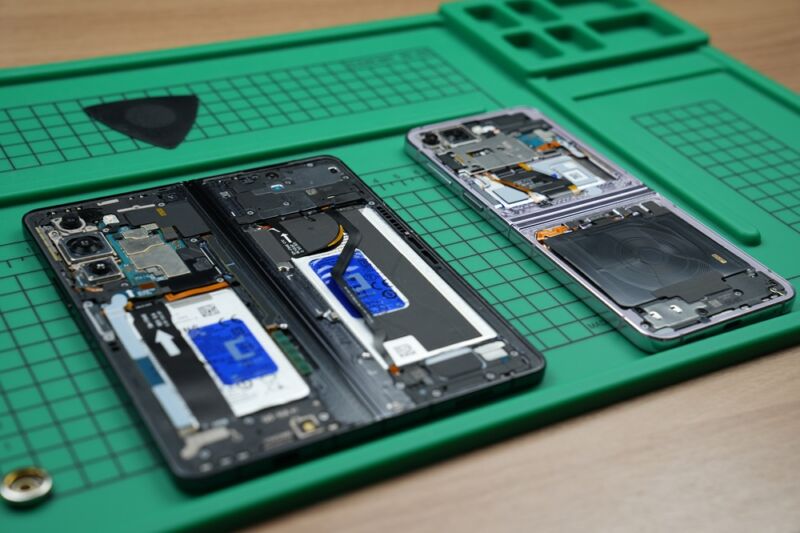Samsung has no follow-through? Shocking —
iFixit says “flashy press releases don’t mean much without follow-through.”

IFixit and Samsung were once leading the charge in device repair, but iFixit says it’s ending its repair partnership with Samsung because it feels Samsung just isn’t participating in good faith. iFixit says the two companies “have not been able to deliver” on the promise of a viable repair ecosystem, so it would rather shut the project down than continue. The repair site says “flashy press releases and ambitious initiatives don’t mean much without follow-through.”
iFixit’s Scott Head explains: “As we tried to build this ecosystem we consistently faced obstacles that made us doubt Samsung’s commitment to making repair more accessible. We couldn’t get parts to local repair shops at prices and quantities that made business sense. The part prices were so costly that many consumers opted to replace their devices rather than repair them. And the design of Samsung’s Galaxy devices remained frustratingly glued together, forcing us to sell batteries and screens in pre-glued bundles that increased the cost.”
-
Samsung’s screen replacement parts usually require buying the display, battery, phone frame, and buttons, which is a big waste.
iFixit
A good example of Samsung’s parts bundling is this Galaxy S22 Ultra “screen” part for $233. The screen is the most common part to break, but rather than just sell a screen, Samsung makes you buy the screen, a new phone frame, a battery, and new side buttons and switches. As we said when this was announced, that’s like half of the total parts in an entire phone. This isn’t a perfect metric, but the Samsung/iFixit parts store only offers three parts for the S22 Ultra, while the Pixel 8 Pro store has 10 parts, and the iPhone 14 Pro Max store has 23 parts.
Even with Samsung’s part-bundling, though, iFixit’s complaint of high prices doesn’t seem reflected in the store pricing. The Pixel 8 Pro screen + fingerprint reader, without a case, battery, and buttons, is $230. An iPhone 14 Pro Max screen is $395. (There is a good chance Samsung is the manufacturer of all three of these displays.)
Samsung and iFixit have always had a rocky relationship. In 2017, the two companies were supposed to partner up for an “upcycling” program, where Samsung found new uses for old phones. The original plan included things like unlocking the bootloader of old devices, so Samsung’s OS could be completely replaced, and hosting an open source marketplace where users could submit ideas and software for repurposing old Galaxy devices. In what now seems like a familiar strategy, Samsung was more concerned about appearances than being actually useful, and iFixit said the upcycling program that launched in 2021 was “nearly unrecognizable” to what iFixit originally endorsed and lent its logo to in 2017.
In 2019, following the “embarrassing” delayed launch of the Galaxy Fold 1 due to durability reasons, Samsung attacked iFixit for doing a teardown of the flawed device. Samsung forced iFixit to take down an article explaining some of the flaws of the device. Samsung didn’t have any legal capability to do this, but it apparently threatened one of iFixit’s part suppliers if the article didn’t get pulled.
Samsung has also reportedly been on the attack against repair, even while it partners with iFixit. On the same day that iFixit announced it was dropping the partnership, 404 Media reported that Samsung requires independent repair shops to turn over customer data and “immediately disassemble” any device found to be using third-party parts. Imagine taking your phone to a shop for repair and finding out it was destroyed by the shop as a requirement from Samsung. The report also says Samsung’s contracts require that independent companies “daily” upload to a Samsung database (called G-SPN) the details of each and every repair “at the time of each repair.”
With the latest chapter of the partnership store dying after just two years, in June 2024, iFixit says some changes are coming to its website. It won’t remove any information, but it will start offering clearly labeled third-party parts in addition to whatever Samsung OEM parts it can source. It will no longer collaborate with Samsung for manuals and won’t need to follow Samsung’s quantity limit requirements.